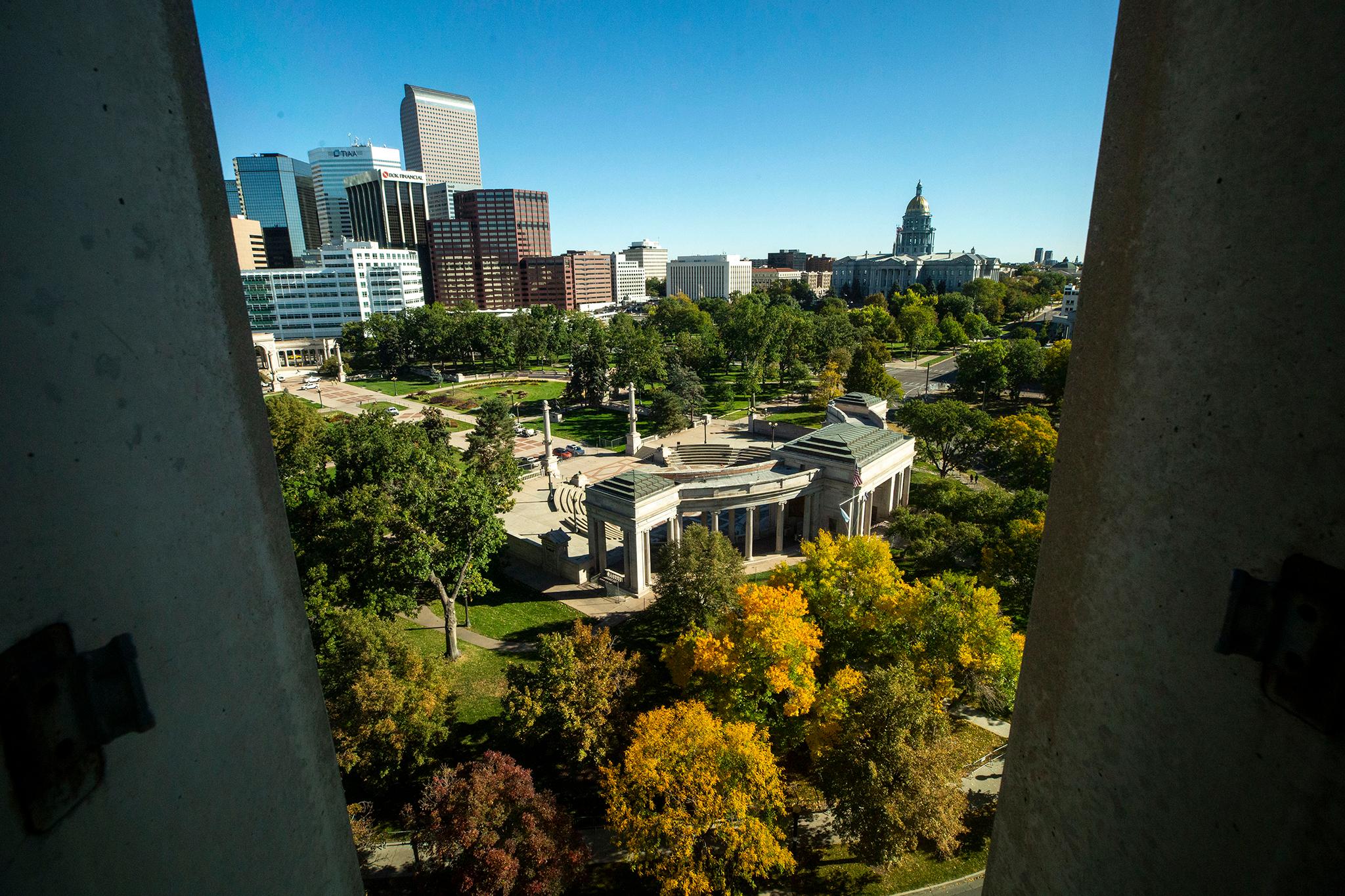A bold experiment in giving non-charter schools near-charter-like levels of autonomy could be expanded if a recommendation by Denver Public Schools becomes reality.
At a school board work session Monday, DPS staff recommended the state’s largest school district solicit applications for more “innovation zones,” as well as applications to expand the district’s first zone, which is made up of four schools and was created earlier this year.
The board and staff did not agree on a timeline for soliciting the applications, opting to revisit the issue in January for further discussion. However, board president Anne Rowe said, “I think what you heard is a sense of urgency to move forward as quickly as can be done as well as we can.”
The first zone was created in April by a unanimous vote of the board. Officially known as the Luminary Learning Network, it’s made up of two schools in northeast Denver — Ashley Elementary School and Cole Arts & Science Academy, also an elementary — and two schools in southeast Denver: Denver Green School, which serves kids in kindergarten through eighth grade, and Creativity Challenge Community, an elementary school known as C3.
The four schools were already innovation schools, which meant they had waivers from certain district and state rules. But forming a zone granted them even more autonomy, especially over their budgets. The schools can now “opt out” of a wider menu of district services, such as some of those provided by an office that helps schools with family engagement, and keep that money.
This year, that amounted to an average of an extra $425 per student.
The schools spent much of that money on personal coaches for the school leaders, training for teachers and hiring more staff. C3 increased its school nurse from one day a week to three. Denver Green School upped its school psychologist to full-time. Ashley hired another part-time special education teacher. And Cole brought on an in-house substitute teacher.
“It causes less disruption for us when we have people who know our scholars,” Cole principal Jennifer Jackson told the school board last month in an update on the zone’s launch.
But the biggest benefit, school leaders said, has been the increased amount of time they’re able to spend in their buildings. No longer are they required to attend budget sessions or meetings with DPS principal supervisors, known as instructional superintendents.
“Those were great opportunities, some of which aligned to what I needed and others not so much,” said Zachary Rahn, principal at Ashley. “But now I feel my coach and I are in charge of my development. It’s much more tailored to what I need as a professional.”
However, launching the zone has presented challenges, as well. Rahn originally planned to step into the role of zone executive director this year but changed his mind when his assistant principal was tapped for an interim principal job at another school.
“Without that person in the building, I did not feel comfortable to be able to leave my position,” Rahn said.
Of the four schools, Ashley has the lowest rating. It dropped this year from “yellow” to “orange,” the second-lowest rating on the district’s color-coded scale, partly due to a decline in student academic growth on state tests. Each zone school has pledged to move up one color in three years in exchange for more autonomy.
The zone hired a new executive director, Jessica Roberts, who previously worked for the Texas charter school network YES Prep. But she didn’t officially start until October 1. She has spent much of her time ironing out the logistics of how the zone should work, meeting weekly with DPS officials to ensure the zone schools are complying with district requirements.
From the district’s perspective, one of the biggest issues has been making sure staff understand the services the zone schools have opted out of and those they’re still entitled to.
“When our office gets phone calls from LLN teachers and leaders, we have to make sure those aren’t services they’ve opted out of,” said Jennifer Holladay, executive director of DPS’s Portfolio Management Team, which authorizes new schools and holds them accountable. “We’re used to saying yes. Sometimes we have to say no.”
Some of the decisions to opt out of district services have had unintended consequences. For instance, the zone schools originally opted out of the services the Portfolio Management Team provides to charter and innovation schools to help them navigate the district’s systems, which allowed the schools to retain about $1 per pupil. But school leaders quickly realized that Portfolio Management was their main point of contact with DPS and they ended up buying back those services, Holladay and the leaders said.
Holladay’s office is currently working on a more granular list of services provided by each department — “a menu of services we can all understand,” she said — so the opt-out process and its aftermath will be clearer for both the schools and for district staff.
The district is also wrestling with how and when to expand the zone. Roberts told the school board last month that for the zone to be sustainable, it needs to grow to eight to 10 schools.
Part of the reason is financial and part is philosophical, she said. While the zone only has one employee — her — it has incurred the same startup costs many nonprofits face: legal fees, the expense of setting up accounting and human resources systems and the like. And though it has benefited from the support of philanthropic foundations, she and others acknowledged those dollars won’t last forever.
Going forward, 100 percent of the money to pay her salary and keep the zone going will have to come from the schools, Roberts said. Running it with just four schools wouldn’t be impossible, she said, but it wouldn’t be ideal; the zone could do much more if there were eight to 10.
Roberts and the school leaders said having additional schools in the zone would allow for even greater collaboration and economies of scale.
“It would be great to have a bigger and more diverse learning community,” said Frank Coyne, lead partner at Denver Green School. “Our four schools are all so different. There’s key things we can learn from each other, which we’re doing now, but we’d like to deepen that.”
And they’d rather not wait, even though the zone hasn’t existed long enough to see if the increased autonomy is trickling down to students and accelerating their learning.
“In our mind, we don’t need to wait to see if student achievement accelerates,” Roberts said. With an innovation zone, “you’re really empowering leaders.”
Several school board members at Monday’s work session expressed interest in taking what one described as a “leap of faith” and betting that the innovation zones will work — despite the fact that the rollout of the first zone hasn’t been smooth.
“This hasn’t been done before,” school board member Mike Johnson, who also serves as the school board representative on the zone’s board of directors, said before the meeting.
“From my perspective, what’s really important isn’t whether I think or the (DPS) board thinks there have been successes,” he added. “It’s what the school leaders think. … Everything I’ve heard is it’s very positive. … That’s exactly what we’re supposed to be doing is empowering school leaders and people in the building to really focus on their kids.”
Chalkbeat is a nonprofit news site covering educational change in public schools.














